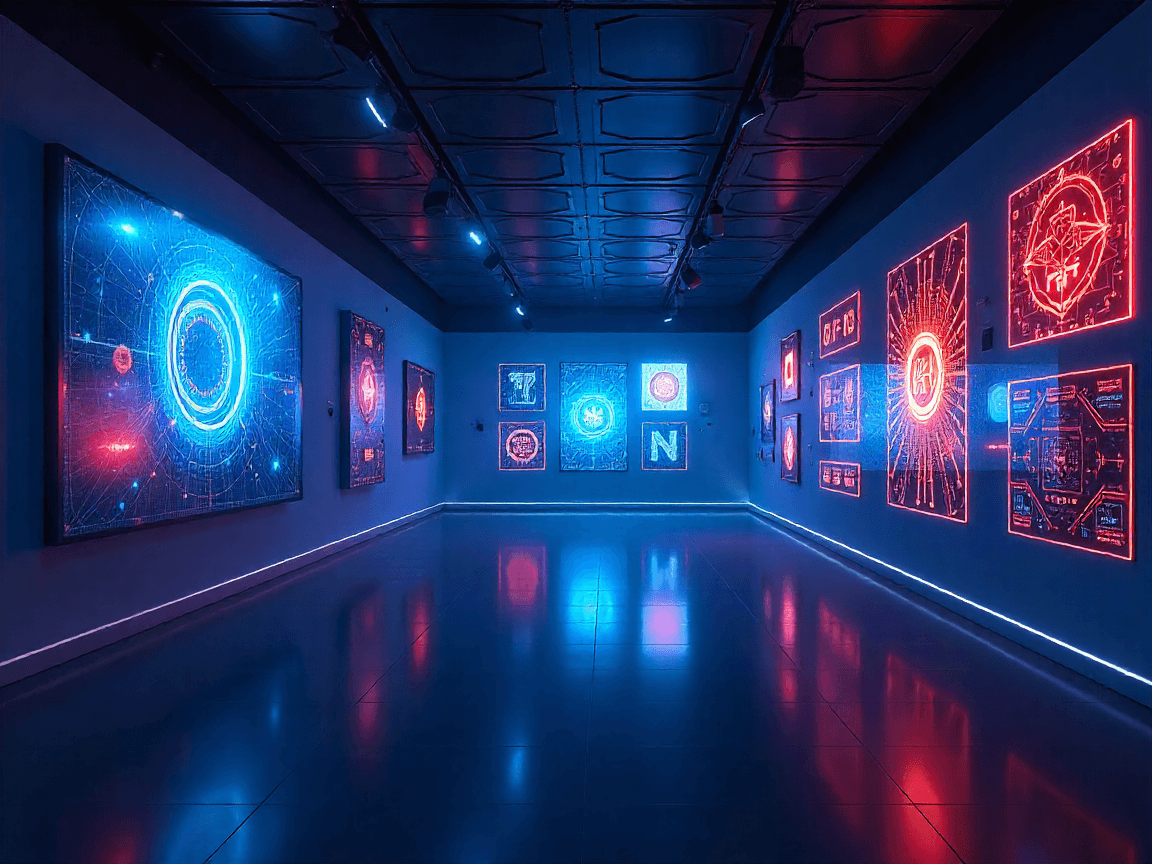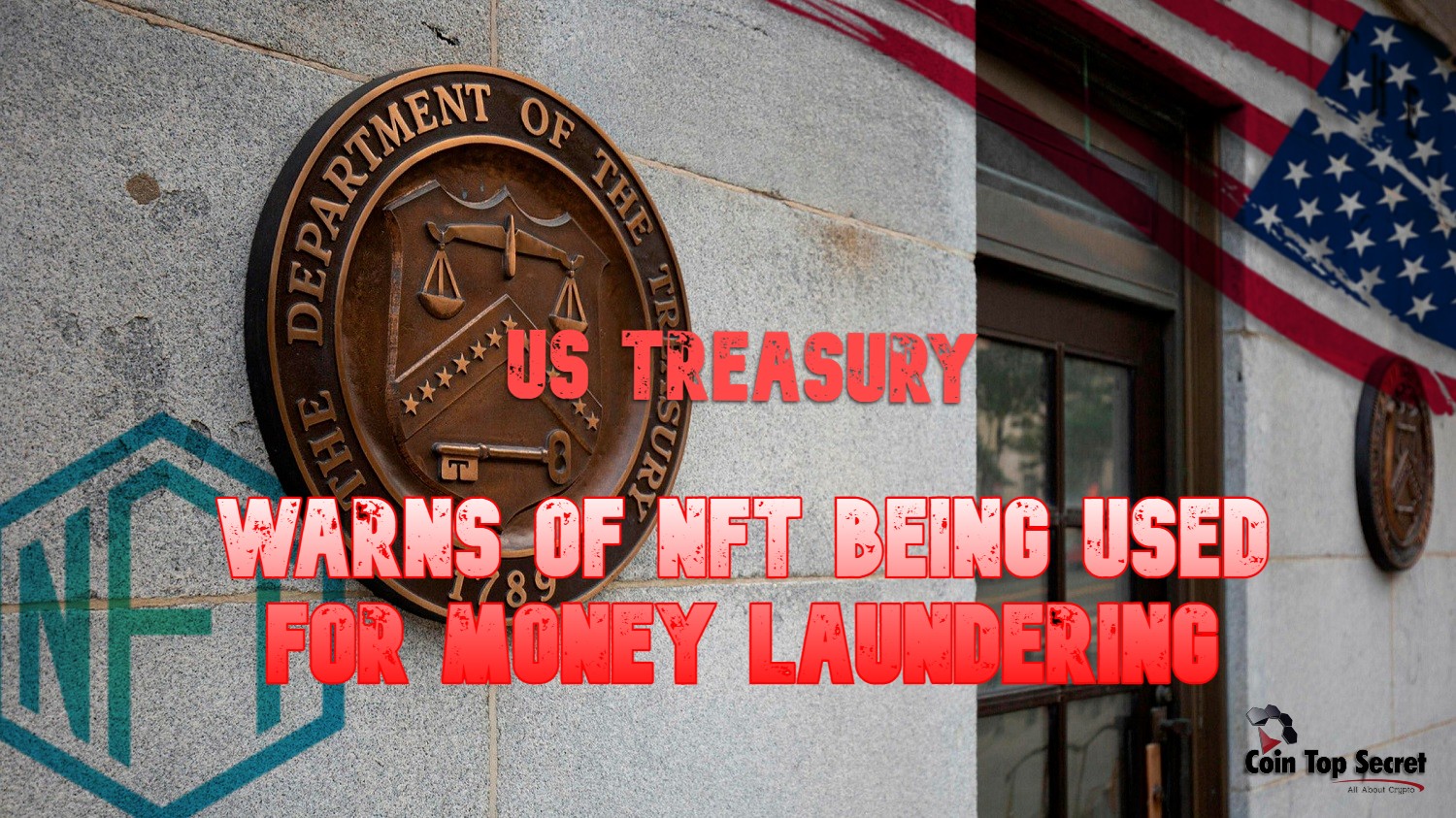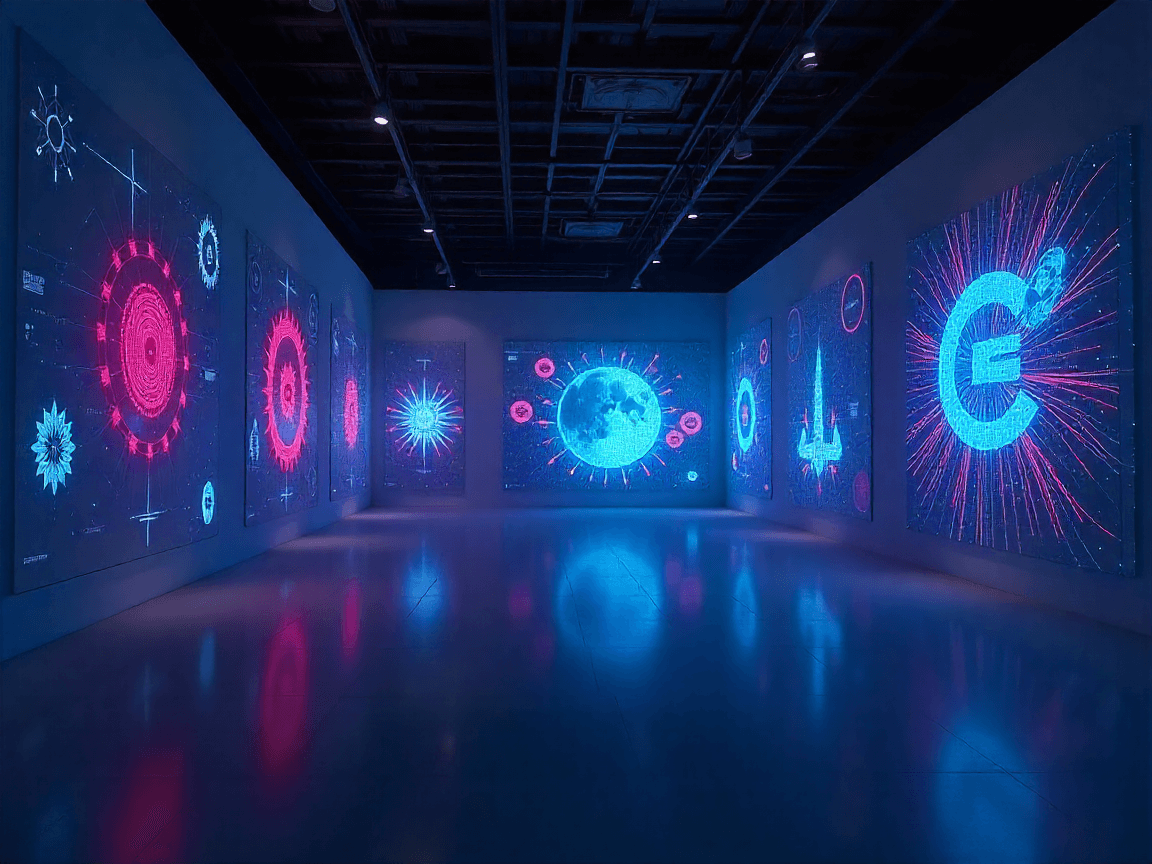The Evolution Beyond Digital Art
Once primarily known for abstract digital art and profile pictures, Non-Fungible Tokens (NFTs) are rapidly evolving. The NFT future in 2025 promises a landscape far more diverse and impactful than what we’ve seen so far, moving decisively beyond mere JPEGs to embrace profound utility and integration across industries.
This transformation is driven by a growing understanding of blockchain’s potential, coupled with advancements in technology and increasing mainstream adoption. What began as a niche interest for crypto enthusiasts is now set to reshape how we interact with digital and even physical assets, offering new paradigms for ownership, identity, and value exchange.
Tokenizing Tangible Assets
One of the most compelling directions for the NFT future is the tokenization of real-world assets. Imagine owning a fractional share of a luxury watch, a piece of real estate, or even a classic car, all represented by an NFT on the blockchain.
This process offers unprecedented liquidity, transparency, and accessibility, lowering barriers to entry for high-value investments. It also simplifies ownership transfer and verification, reducing traditional friction points and intermediaries.
– Fractional ownership: Breaking down expensive assets into smaller, more affordable NFT units.
– Enhanced liquidity: Allowing easier buying and selling of traditionally illiquid assets.
– Verifiable authenticity: NFTs serve as immutable proof of ownership and asset provenance.
– Streamlined legal processes: Smart contracts can automate aspects of asset transfer and management.
Empowering Creator Economies
The creator economy is experiencing a revolution thanks to NFTs. Artists, musicians, writers, and digital creators are finding new ways to monetize their work, connect directly with their audience, and retain greater control over their intellectual property.
Royalties embedded into smart contracts ensure that creators receive a percentage of future sales, a significant shift from traditional models. This continuous revenue stream empowers long-term creativity and financial independence.
Furthermore, NFTs foster deeper engagement between creators and fans. Exclusive content, early access, and community membership can all be token-gated, creating highly engaged, loyal fan bases. This direct relationship cuts out many middlemen, increasing creators’ margins and fostering genuine communities.
Interoperability and the Metaverse: A Seamless NFT Future
The metaverse, a persistent and interconnected virtual world, is the natural home for NFTs. As these digital realms expand, the ability for NFTs to move seamlessly between different platforms and applications will define a truly integrated NFT future.
Interoperability is key to unlocking the full potential of digital identity, assets, and experiences within these emerging virtual economies. Users will expect their digital collectibles, avatars, and property to transcend single platforms.
Bridging Blockchains
Currently, many NFTs reside on specific blockchains like Ethereum or Solana. However, the future points towards cross-chain compatibility, allowing NFTs to be transferred and utilized across multiple blockchain networks. This will break down silos and expand the utility of digital assets.
Projects focused on “wrapped” NFTs or cross-chain bridges are paving the way for a more fluid ecosystem. This ensures that an NFT acquired on one chain can be showcased or used in an application built on another, maximizing its value and reach.
The seamless transfer of digital assets will become a standard expectation, empowering users with true ownership that isn’t confined to a single ecosystem. This is vital for the growth of a truly decentralized digital economy.
NFTs as Digital Identity and Avatars
Your digital identity in the metaverse will largely be defined by your NFTs. Avatars, clothing, accessories, and even your digital reputation can be represented by non-fungible tokens.
These identity NFTs will unlock unique experiences, grant access to exclusive virtual spaces, and reflect your standing within various digital communities. They offer a self-sovereign identity that users truly own and control.
Beyond aesthetics, digital identity NFTs could store verified credentials, certifications, or historical data, creating a comprehensive digital persona that is both unique and verifiable. This concept is central to the emerging NFT future.
Gaming and Play-to-Earn Models
Blockchain gaming is perhaps one of the most exciting areas for NFT growth. Play-to-Earn (P2E) models, where players can earn valuable in-game assets as NFTs, are transforming the relationship between gamers and game developers.
Players gain true ownership of their in-game items, which can be traded, sold, or even used across different games if interoperability allows. This creates a real-world economy within virtual worlds, rewarding players for their time and skill.
The ability to own unique skins, powerful weapons, or rare creatures as NFTs adds a layer of economic incentive and engagement previously unseen in traditional gaming. As game development embraces blockchain, the NFT future in gaming looks incredibly bright.
The Rise of Utility and Experiential NFTs
The true power of NFTs lies in their utility. Beyond simply being collectibles, NFTs are increasingly being used to grant access, verify authenticity, and facilitate unique experiences. This shift from pure speculation to tangible value is critical for sustainable growth.
As the market matures, the demand for NFTs that offer practical benefits or exclusive experiences will surge. This is where the core value proposition of the next wave of NFTs resides.
Exclusive Access and Memberships
NFTs are redefining memberships and access. Instead of traditional club cards or subscriptions, an NFT can serve as a digital key, granting holders entry to exclusive online communities, private events, or members-only content.
This model allows creators and brands to foster highly engaged, loyal communities by offering tiered access and unique perks. The scarcity and verifiable ownership of NFTs make these memberships highly desirable.
– Decentralized Autonomous Organizations (DAOs): NFTs can represent voting rights and membership within DAOs, giving holders a say in collective decisions.
– Brand loyalty programs: Brands can issue NFTs to reward loyal customers with exclusive products, discounts, or early access to new releases.
– Community building: NFTs create a shared sense of identity and belonging among holders, fostering strong, engaged communities.
Event Ticketing and Authenticity
The ticketing industry is ripe for disruption by NFTs. Event tickets issued as NFTs can eliminate scalping, prevent fraud, and offer new opportunities for event organizers and attendees.
Each NFT ticket is unique and verifiable on the blockchain, ensuring its authenticity. Organizers can also earn royalties on secondary market sales, creating a fairer revenue model.
For attendees, NFT tickets can become collectibles, providing lasting memories or unlocking future perks related to the artist or event. This verifiable provenance and secondary market potential add significant value.
Fractional Ownership and DAOs
Beyond tangible assets, NFTs are enabling fractional ownership of high-value digital assets and collective governance through Decentralized Autonomous Organizations (DAOs). This unlocks new investment opportunities and forms of community-led decision-making.
Fractional NFTs allow multiple individuals to own a portion of a single valuable NFT, such as a rare piece of digital art or a metaverse land parcel. This democratization of ownership makes exclusive assets more accessible.
DAOs use NFTs as membership tokens, granting voting rights and shared ownership of a treasury. This structure empowers communities to collectively manage projects, investments, or protocols in a transparent and decentralized manner, embodying the collaborative spirit of the NFT future.
Technological Advancements Driving the NFT Future
The rapid evolution of blockchain technology is a fundamental driver for the NFT future. Innovations in scalability, security, and user experience are overcoming previous limitations, making NFTs more accessible and practical for a wider audience.
These technological leaps are essential for supporting the massive transaction volumes and complex interactions that the next generation of NFTs will demand. Without robust underlying infrastructure, widespread adoption would remain a distant dream.
Layer 2 Solutions and Sharding
One of the biggest challenges for early NFT adoption was the high transaction fees (gas fees) and network congestion on primary blockchains like Ethereum. Layer 2 solutions (e.g., Polygon, Arbitrum, Optimism) and sharding are directly addressing these issues.
These technologies process transactions off the main blockchain, bundling them together and then submitting them back, significantly reducing costs and increasing transaction speed. This makes NFT minting, trading, and transfers far more efficient and affordable for everyday users.
The result is a more scalable and user-friendly ecosystem, crucial for welcoming millions of new users into the NFT space. Lower barriers to entry are paramount for realizing the full potential of the NFT future.
Enhanced Security and Transparency
Blockchain’s inherent security features provide an immutable ledger for NFT ownership and transactions. However, ongoing advancements are making the ecosystem even more secure and transparent.
Improved smart contract auditing, better wallet security protocols, and increased education around best practices are reducing risks like scams and hacks. Transparency is enhanced by tools that allow users to easily track transaction histories and verify asset provenance.
These security measures build trust and confidence, which are vital for attracting institutional investors and mainstream users who demand robust protections for their digital assets.
Emerging NFT Platforms and Marketplaces
The landscape of NFT platforms and marketplaces is constantly evolving, with new players emerging to offer specialized services, lower fees, or enhanced user experiences. These platforms are crucial for bringing the NFT future to life, providing the venues where digital assets are created, traded, and discovered.
As the market matures, we see a diversification of platforms beyond general marketplaces, focusing on specific niches like gaming, music, fashion, or real estate NFTs. This specialization caters to diverse user needs and fosters innovation within distinct verticals.
The competition among these platforms drives innovation, leading to better features, improved security, and more intuitive interfaces. Users benefit from more choices and better tools for engaging with the NFT ecosystem.
Comparison of Leading NFT Marketplaces
| Platform | Key Fees | Pros | Cons | Best For |
|---|---|---|---|---|
| OpenSea | 2.5% service fee on sales | Largest marketplace, wide variety of NFTs, beginner-friendly interface. | Higher fees compared to some rivals, occasional congestion issues. | General NFT trading, discovery of diverse projects. |
| Blur | 0.5% protocol fee (optional creator royalties) | Designed for pro traders, fast transactions, aggregator features. | Less intuitive for beginners, focuses heavily on floor price trading. | Experienced NFT traders and collectors seeking efficiency. |
| Magic Eden | 1.5% transaction fee | Dominant on Solana, expanding to Ethereum, strong focus on gaming NFTs. | Primarily associated with Solana, still growing on other chains. | Solana NFT enthusiasts, blockchain gamers, cross-chain exploration. |
Regulatory Landscape and Mainstream Adoption
As NFTs move from niche to mainstream, the regulatory landscape is rapidly catching up. Clarity from governments and financial bodies will be crucial for fostering trust, protecting consumers, and enabling broader institutional and retail adoption. The NFT future heavily depends on this.
Uncertainty around legal classification (e.g., asset, security, collectible) currently presents challenges, but ongoing dialogues are working towards a more defined framework. This will provide a stable environment for innovation.
Navigating Legal Frameworks
Governments worldwide are grappling with how to classify and regulate NFTs. This involves questions of taxation, intellectual property rights, consumer protection, and anti-money laundering (AML) compliance.
Clearer guidelines will enable businesses to build and operate within the NFT space with greater certainty, encouraging larger investments and more sophisticated applications. Collaboration between regulators and industry experts is vital for creating effective and future-proof frameworks.
The goal is to strike a balance: fostering innovation while safeguarding against potential risks. As the technology matures, so too will the legal and ethical considerations surrounding its use, shaping how the NFT future unfolds.
Education and Accessibility
For NFTs to truly go mainstream, widespread education and improved accessibility are paramount. Many potential users are still intimidated by the technical jargon and complex processes associated with blockchain technology.
Simpler user interfaces, clearer explanations of concepts, and integrated fiat-to-crypto on-ramps are making it easier for non-technical individuals to engage with NFTs. Educational initiatives are crucial for demystifying the space.
As onboarding processes become smoother and the benefits of NFTs become more apparent, a broader demographic will feel comfortable exploring this innovative technology. This inclusivity is key to sustained growth and integration into daily life.
The NFT future is undeniably dynamic, promising a world where digital assets are integrated into nearly every facet of our lives. From redefining ownership and empowering creators to transforming gaming and enabling immersive metaverse experiences, NFTs are poised for exponential growth and innovation.
As technology advances and regulatory clarity emerges, the barriers to entry will continue to fall, paving the way for mass adoption. We are moving towards an era where NFTs are not just digital collectibles, but fundamental building blocks of a new, decentralized digital economy.
Embrace the revolution and explore the limitless possibilities that lie ahead. For more insights or collaboration opportunities, visit www.agentcircle.ai.
Frequently Asked Questions (FAQ)
What is the primary difference between early NFTs and the expected NFT future?
Early NFTs were largely focused on digital art and collectibles without much inherent utility beyond ownership and aesthetic value. The expected NFT future, however, emphasizes practical utility, real-world asset tokenization, experiential benefits, and seamless integration into larger ecosystems like the metaverse and creator economies.
How will NFTs impact traditional industries like real estate or finance?
NFTs are set to revolutionize these industries by enabling fractional ownership of high-value assets, improving liquidity, enhancing transparency through immutable records, and streamlining legal processes via smart contracts. This could democratize investment opportunities and reduce reliance on traditional intermediaries.
Are NFTs environmentally sustainable?
The energy consumption of NFTs has been a concern, particularly for those on Proof-of-Work (PoW) blockchains like Ethereum (prior to The Merge). However, the NFT future is increasingly shifting towards more environmentally friendly Proof-of-Stake (PoS) blockchains and Layer 2 solutions, which significantly reduce energy consumption per transaction, making them far more sustainable.
What role will artificial intelligence play in the NFT future?
AI will likely play a significant role in the NFT future, assisting in the creation of generative art NFTs, enhancing marketplace personalization and discovery, and even powering intelligent NFT avatars within the metaverse. AI could also be used for fraud detection and to analyze market trends, providing valuable insights for creators and collectors alike.
References and Further Reading
- Ethereum.org – Non-Fungible Tokens (NFTs)
- World Economic Forum – The Future of NFTs and Digital Assets
- Decrypt – What Are Layer 2s? Ethereum Scaling Solutions Explained



